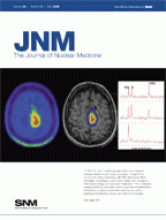TO THE EDITOR: Leonard Freeman's perspective on the use of the ventilation–perfusion scan (1) will be a useful resource for those of us struggling to educate our clinicians on the relative utility of scintigraphy and multidetector CT angiography in the diagnosis of pulmonary embolism. Like him, we instituted triage using the clinical history and the chest radiograph findings to determine which modality to use. Those with abnormal radiograph findings or a clinical history of significant preexisting cardiopulmonary disease proceed directly to multidetector CT angiography. In the 3 y or so since the introduction of this system, we have seen a significant reduction in the number of indeterminate results with scintigraphy, but some patients still end up getting the wrong investigation, often as a result of insufficient clinical information being available to the radiologist. We are attempting to remedy this problem by using a specific request card for the investigation of suspected pulmonary embolism, and this remedy is currently being piloted.
I note that Dr. Freeman specifically mentions the presence of fluid, atelectasis, and consolidation on the chest radiograph as disqualifying factors for scintigraphy. As he states, this type of gross change is relatively unusual, and in my experience, indeterminate ventilation–perfusion findings are most frequently the result of preexisting chronic obstructive pulmonary disease. These patients often have chest radiograph findings that are relatively normal, with the only changes being some overinflation and a subtle increase in bronchovascular markings. On the occasions when I have gone ahead with a ventilation–perfusion scan slightly against my better judgment because the chest radiograph showed only minor changes of chronic obstructive pulmonary disease, I have nearly always regretted it, the resulting images showing widespread matched defects of ventilation and perfusion. If the vetting process is delegated to radiologists not directly involved in the pulmonary embolism imaging service, it is important that they realize that consolidation, atelectasis, and effusions are not the only findings that make patients unsuitable for scintigraphy, or these radiologists may give the all clear to chest radiographs showing quite marked changes of chronic obstructive pulmonary disease.
Footnotes
-
COPYRIGHT © 2008 by the Society of Nuclear Medicine, Inc.
References
- 1.↵







